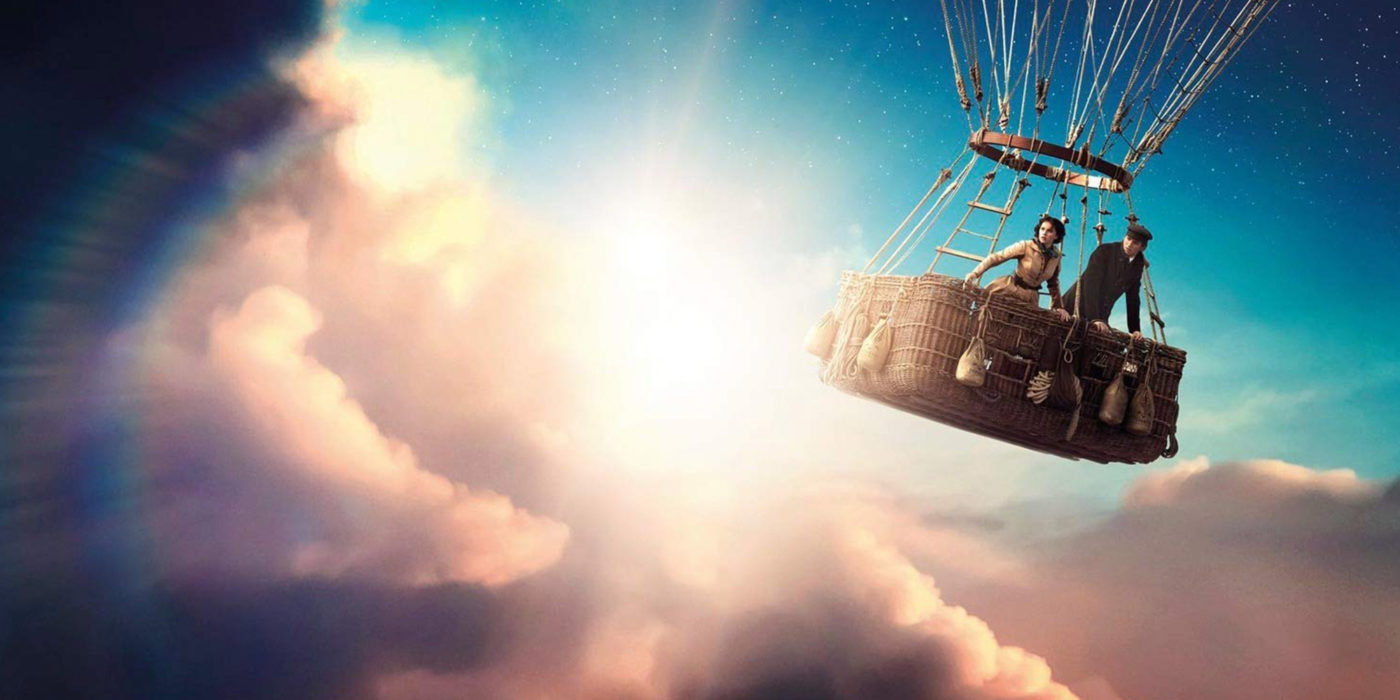The first people to gaze down on the Earth from the heights we take for granted with today’s air travel were the aeronauts, pilots of hot-air and gas balloons that rose aloft to offer vast perspectives of the beauty of the land and the silence of the air. Beginning with the first piloted ascent of the Montgolfier brothers in 1783, aeronauts boldly took to the skies, facing unimagined risks and joys alike, inscribing both triumph and tragedy into the pages of history.
Amazon Studios’ recent film “The Aeronauts” takes as its foundation the record-setting 1862 hydrogen balloon flight by meteorologist pioneer James Glaisher and professional aeronaut Henry Coxwell, then flies free into a story of courage, ingenuity and the human spirit. Though semi-fictional, it pays homage to the real daring and wonder of the aeronautic era.
Eddie Redmayne (“Fantastic Beasts,” “Les Miserables”) and Felicity Jones (“Rogue One,” “On the Basis of Sex”) reunite as the leads in this film, bringing the working friendship and chemistry they cultivated in “The Theory of Everything” to the unlikely pairing of the science-wonkish Glaisher with the trailblazing yet traumatized aeronaut Amelia Wren (an amalgamation of historic women aeronauts including Margaret Graham and Sophie Blanchard). Jones brings the courage and emotion of her “Rogue One” action hero Jyn Erso as well as the heart of her “The Theory of Everything” Jane Hawking. Redmayne excels at portraying the intersection of science and wonder, as we’ve seen in both “The Theory of Everything” and “Fantastic Beasts.”
Taking risks and going beyond the comfort zone is not just a theme of the on-screen story, but of the creation of the film. Many of the shots actually took place in a balloon basket 2000 feet aboveground, despite cinematographer George Steel (“Robin Hood”)’s admitted terror of heights. The result is breathtaking in a way that CGI alone could never have captured. Script writer Jack Thorne’s choice to delete Coxwell and write Wren in his place has met with controversy. But it allows the story to explore broader themes of women’s roles in that era, and the way female aeronauts sometimes had to push harder, add theatrics, and face even more dangers than the men, in order to gain respect.
Perhaps this is epitomized in the way Thorne rewrote the moment of crisis when the balloon had gone too high and both passengers were weakened by the extreme altitude and cold. Coxwell had to climb up into the rigging of his balloon to release the frozen escape valve with his teeth in order to keep himself and an unconscious Glaisher from drifting upward to their deaths. But in what might be the most heart-stopping scene in a movie full of breathtaking heights, Thorne has a dazed and freezing Wren climb with bleeding hands to the very top of the balloon in order to stomp the valve open. Glaisher only realizes afterward, when the shoe she left at the top of the balloon falls back down to their basket, what an immense risk she took to save their lives without his knowing it.
Before the two can return safely to Earth from their peak of 37,000 feet (higher than the top of Mount Everest, an altitude occupied today by jumbo jets), they have to literally throw away everything they brought with them into the sky: first Glaisher’s equipment, then their coats. Then they cut away their basket entirely and cling to the rigging, but it’s still not enough to slow their descent. Finally just as Wren prepares to jump away and sacrifice herself the way her husband did for her two years ago in a balloon trip gone devastatingly wrong, Glaisher comes up with the idea to turn their balloon into a parachute. It’s an intriguing inversion of the “magic flight” return in the archetypal hero’s journey, in which the hero makes his way back from the realm of adventure to the ordinary world. It powerfully symbolizes the transformation that Glaisher and Wren have had to undergo individually and together to reach the previously untouched heights and find their way home again.
The film begins with the departure of the balloon. The characters’ motivations and backstory is revealed in flashback scenes as the balloon ascends. This narrative choice sometimes bogs down the pacing, but it does help to illustrate the way both Glaisher and Wren were brought to face themselves and their fears on their way to the historic height, then had no choice but to let it all go. By the time they landed, nothing would ever be the same for either of them.
In a highly competitive Oscar season, and with a plot that didn’t always soar, “The Aeronauts” didn’t quite reach the same stratospheric heights of acclaim as previous achievements by Jones, Redmayne or Steel. But it’s still a visually stunning, heart-stirring testament to the power of boldness to change the world.
Pranada McBurnie is a communications professional living in Toronto, Canada. She is the Editor for Parvati.org, including Parvati’s forthcoming self-help and fiction books under GEM: Global Education for MAPS.
Other films to check out this month:
“Dolittle”
(January 17, 2020):
Featuring an all-star cast including Robert Downey Jr., Antonio Banderas and Michael Sheen, with the voices of Tom Holland, Marion Cotillard, Selena Gomez, Emma Thompson and more. Dr. Dolittle is joined by his crew of exotic animals as they embark on a wondrous journey to help save the life of young Queen Victoria.
“Olympic Dreams”
(IFC Films—February 14, 2020):
The first feature film ever shot at the Olympics and onsite at the Olympic Village, this heart-filled indie dramedy is written by and stars Olympian steeplechaser turned actress Alexi Pappas as Penelope, an introverted cross-country skier at Pyeongchang 2018, and comedian and voice actor Nick Kroll as Ezra, an outgoing dentist volunteering at the Games.
“The Call of the Wild ”
(20th Century Fox—February 21, 2020):
In this screen adaptation of the literary classic, outdoorsman John Thornton (Harrison Ford) finds a worthy sidekick in Buck, the loveable dog stolen from pampered domesticity and ultimately sent on a journey to the Alaskan wild. The partners find adventure and battle foe, as Buck develops from courageous sled dog to leader of a wolf pack.
Enjoy the Film column archive here.















